25.02.2021by Sophie Hermans
Ready, set, measure!
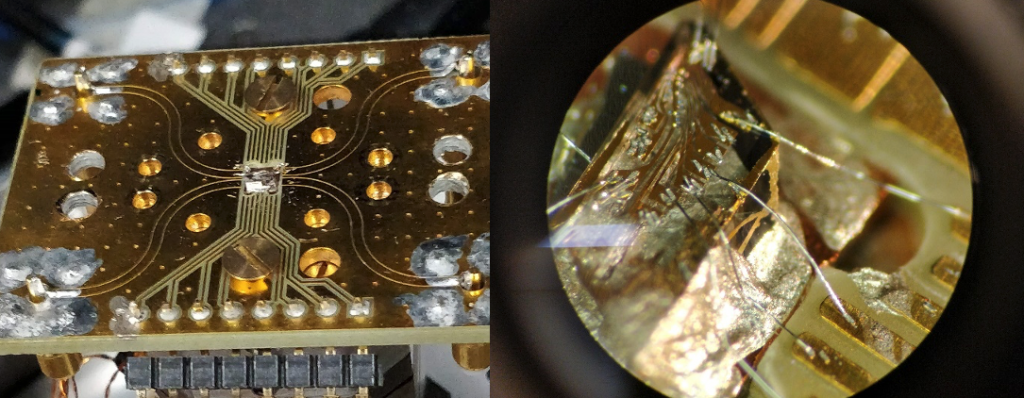
by Sophie Hermans
After two and a half years of preparations, it is finally time. We are ready, the quantum bits are ready; we will be entangling three quantum bits and teleport entanglement. A world’s premier. Time to measure!
In our lab we work with quantum bits. Those are tiny particles (or waves) that act differently than the bits you and I have in our everyday computers. These quantum bits can be in a superposition state, they can be both 0 and 1 at the same time. Only when we do a measurement, the bits choose one of the two possible outcomes. If superposition was not weird enough, we can entangle quantum bits, which means that they share a state. For example: two entangled quantum bits are both in superposition, but if we do a measurement they will both give the same outcome, either both 0 or both 1. In other words, they will always have correlated outcomes. As soon as (and as long as) the bits are entangled, it doesn’t matter anymore whether they are right next to each other or hundred kilometres apart, they will be connected.
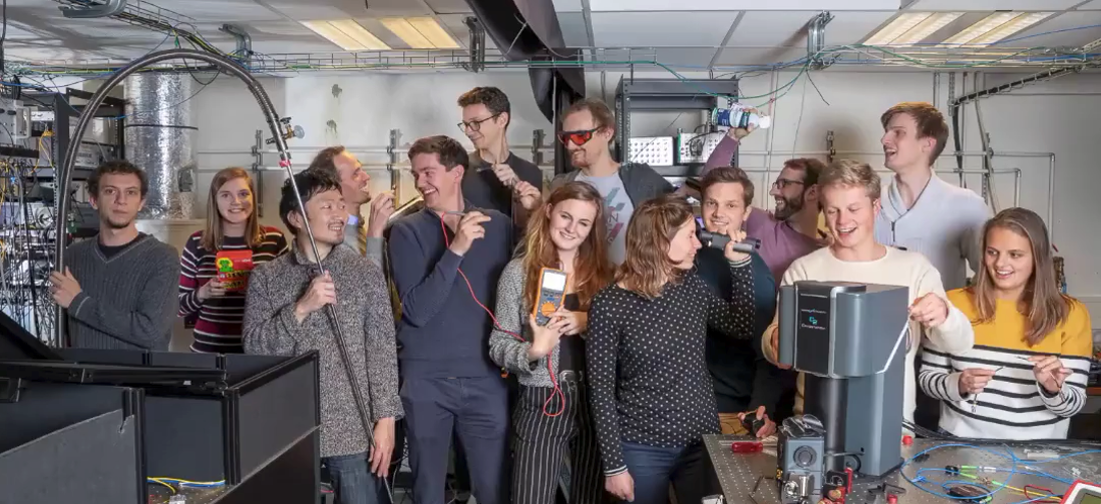
The quantum bits we use in our experiments are single electrons that we trap in a piece of diamond. Using electrical pulses, we can bring them in superposition states and with laser beams we can entangle quantum bits in different experimental setups. Until now, scientists from several research groups have managed to entangle two distant quantum bits, but never more than two (or to be entirely correct, not in the way we do it, where we can use the entanglement for something else afterwards). Even more complicated is teleporting entanglement, a procedure that allows quantum bits to be entangled without them sharing a direct physical connection (like an optical glass fibre). Entanglement teleportation is an important step towards a practical quantum internet, because it means you don’t need direct connections to all other users of the network (imagine you would need a glass fibre to everybody in the network, that would mean a lot (!) of cables). These are exactly the two things we want to measure: entangling three distant quantum bits and teleporting entanglement!
Since the beginning of my PhD, we have been working on the preparations for this experiment. We have built a third quantum node (where the quantum bit is), made a new design for connecting the setups together and we managed to store entangled states long enough as required for this experiment. After almost three years, all parts of the experiment have been prepared and tested: we are ready to go.
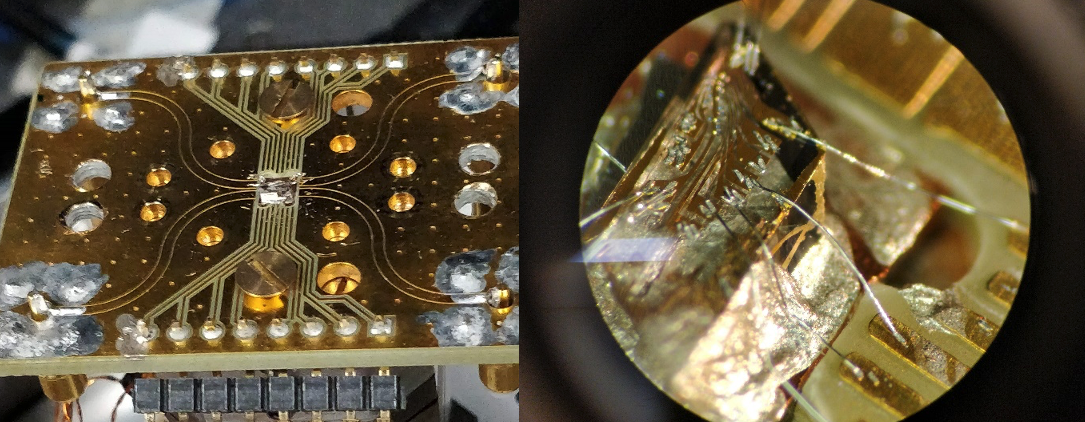
It is not that simple to prove that we have entangled three particles or that we have teleported entanglement. Above I described that entangled bits always give correlated outcomes. In theory this is the case, but in practice it is slightly different. In the experiment we suffer from unwanted disturbances to the quantum bits. As a result, the quantum bits sometimes show uncorrelated results. To prove that our quantum bits are truly entangled, we must show that our quantum bits give correlated results more often than normal bits could ever give (or as we physicists call them: classical bits).
But even then, we are still not there yet; we must gather enough statistics to show that our measurement results are not a coincidence, that we were not lucky this one time. What do I mean by this? Imagine you are playing the Game of Goose and you claim that you have magical powers and always throw six. Say you then throw the dice and have two times six in a row, your friends or family will say that you are just lucky. However, if you throw six one hundred times in a row, they will probably reconsider their statement (and will never play a game with you again). In the same way, we have to collect enough data points such that the chance of us having just luck with our measurement results is very small.
Then the question; what is enough?
We estimate that we need roughly 450 data points to show the entanglement of the three quantum bits. That doesn’t sound like much, but we obtain more or less one data point per minute. Taking all calibrations of the apparatus and other routine tests into account, this results in three full days of running, just for one of the two experiments. And if I say full days, I mean full days! To use our nodes as efficiently as possible, we measure almost 24 hours a day, divided over three shifts. I’m more of a morning person, so I take mostly the morning shift from 07:00 to 14:00. The shift in the afternoon is from 14:00 to 21:00 and the night shift from 21:00 to 04:00 (fortunately Matteo doesn’t mind living in another time zone for a while). The remaining hours we use for automatic calibrations and optimizations, so the nodes really never sleep!
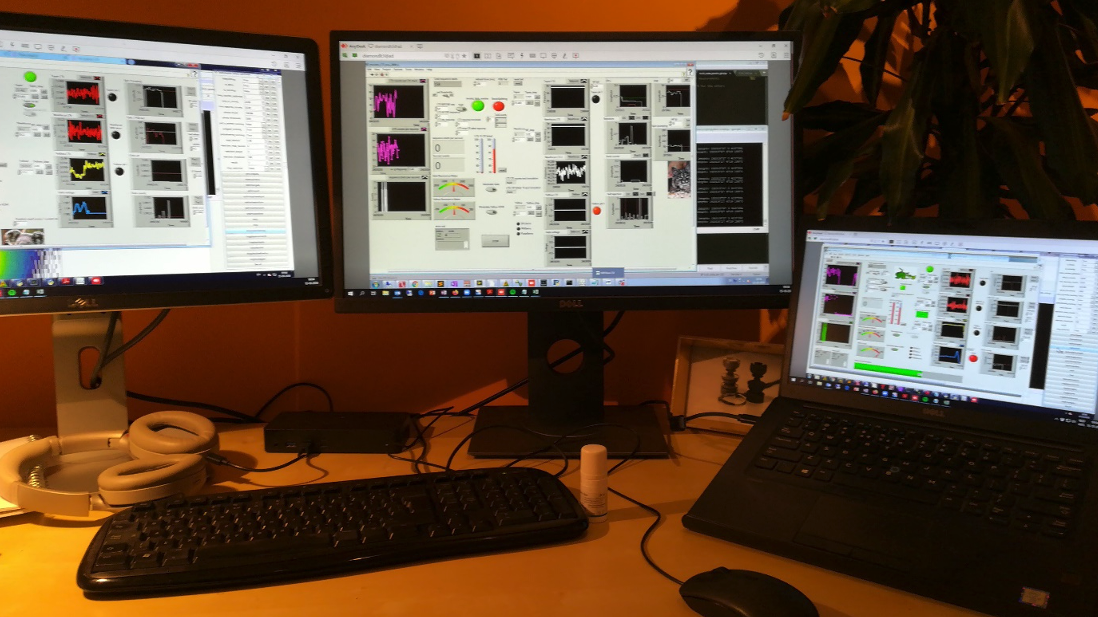
After three days of checking calibrations, drinking coffee, making sure nothing goes wrong, listening to podcasts in the meantime, changing minor things now and then and drinking even more coffee, the measurements are finished. In order to remain unbiased (and prevent cherry-picking; again our measurement outcomes shouldn’t be a lucky result), we haven’t looked at any of the measurement results yet and now we are going to analyse the results for the first time. We are in a zoom call with the whole team and one of us is sharing the computer screen that is processing the data (that is one of the advantages of all these zoom meetings, everyone can put their nose to the screen, even my colleague Simon who is working from Austria). One hit on the ‘Enter’-button and we get the result… And the result is… unclear. The measurement outcomes are not as good as we expected, but also not downright worthless (the typical science example, something is not black or white, but something in between). After a thorough statistical analysis of Matteo, we get the disappointing answer. Our measurement results are consistent with having three entangled quantum bits, but not that clear that we can say it with certainty.
Don’t give up; recuperate and continue!
During the experiment we have learned a lot; we improve a few experimental settings and decide to increase our measurement time to more than double (Professor Ronald: ‘I would say two more days are worth it for one of the most important datasets in your PhD’). This time we will measure seven days per experiment, such that we can tell with larger certainty whether the experiment has succeeded or not. Unfortunately, these measurement days don’t go by without some setbacks: all of a sudden we see extra noise in one the calibrations; one of the dozens of mirrors on the optical table is not optimally positioned. We reposition it and continue. Some time later, we get ice one of the setups (our quantum bits work under vacuum at very low temperatures, so it can happen that we get some condensation on our diamond, leading to ice: not nice!). We solve the issue and continue on our quest.
Two weeks later. Both experiments are finished and successful! This time the results are clear: we have shown three entangled quantum bits and teleported entanglement. These are results that have never been shown before and a big step towards a quantum internet. What is left is to summarize our results neatly and write it down in a research article to share with the rest of the scientific community. But all the hard work has been done.
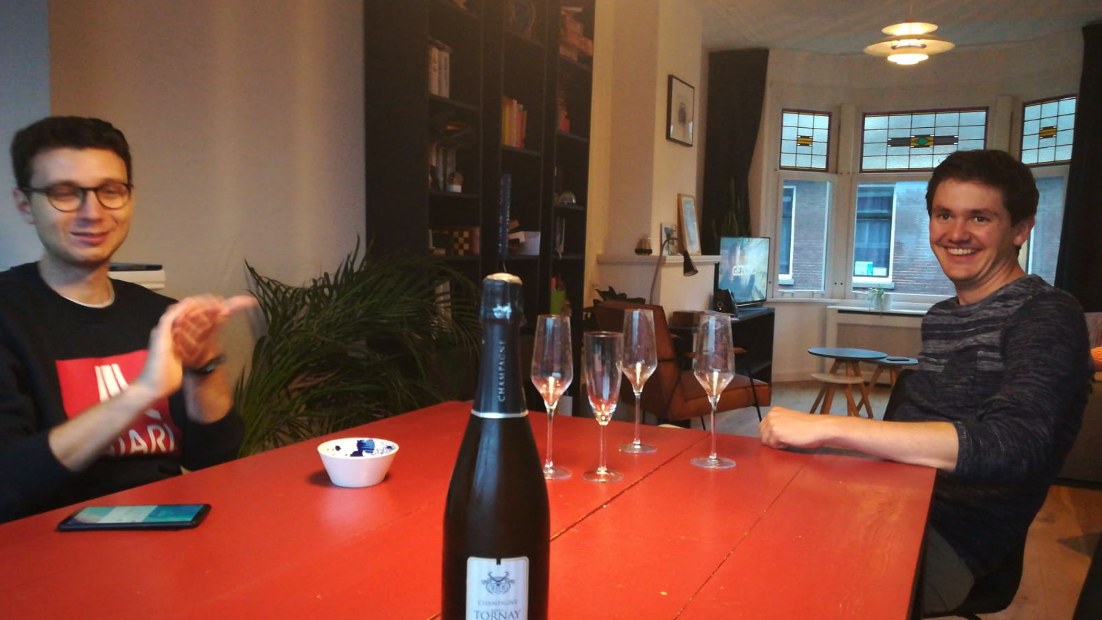
Only in the week after the experiments I realized how exhausting these weeks were. A form of restlessness, will the results be good enough? But also excitement, this is what we worked towards for the last two and a half years. I couldn’t stop thinking about the experiment, and I was not the only one. I think this really shows the commitment and the passion for science of everyone. And what is next? We have a lot of plans for the next experiment; to name a few: adding more quantum bits, making it run faster and reducing unwanted disturbances to our qubits. To do so, we need to improve a few things and then, again… time to measure!
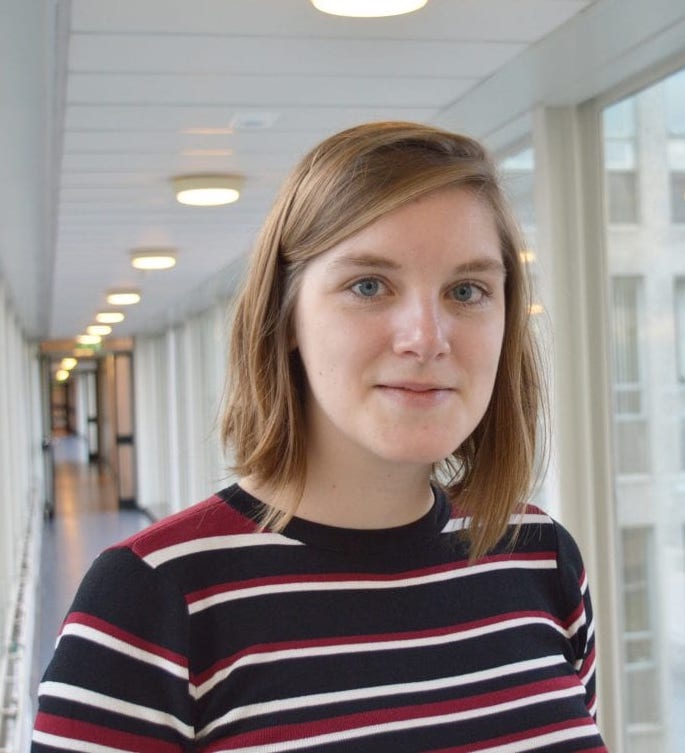
About the Author
Sophie is a PhD student in the group of prof. Ronald Hanson. As an experimental physicist she has been working on building a multi-node quantum network, using nitrogen-vacancy centers in diamond as nodes. This work serves as a proof-of-principle of a quantum network, it enables the exploration of first multi-node protocols.
Sophie is one of the QuTech Speakers; she often gives talks to various audiences, ranging from high-school students to tech-interested people. Next to this, she is one of the Faces of Science appointed by the KNAW (Royal Netherlands Academy of Arts and Sciences). In this role she explains, through blog posts, what it is like to be a scientist.
This post is a translation and adaptation of a post for the Faces of Science blog, which you can find here.

